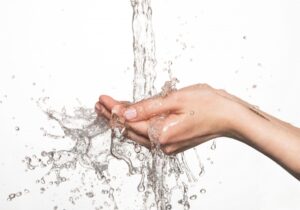Sometimes, well water is the only option, when you’re out of reach of municipal water systems. And sometimes, having a well is a choice. Either way, it can be fantastic to drink fresh water, free of the chlorine that’s added to cities’ water supplies.
Unfortunately, it’s not always free of other contaminants. While towns and cities constantly test the water they distribute to their residents, your well water is your responsibility. To make sure that the water you drink and give to your family members and pets is clean and healthy, you need to have your well water tested. Here’s why.
Unpleasant Additions to Your Water
Depending on where you live, what goes on around you such as industry or agriculture, the well itself, and your home’s plumbing, there can be a wide variety of things in your water that you really should not drink. These contaminants can include coliform bacteria, E. coli, nitrates or nitrites, arsenic, volatile organic chemicals, inorganic chemicals, minerals like calcium and magnesium that cause hard water, and metals like lead, copper, and an excess of iron.
How Contaminants Get into Your Water
Groundwater can be contaminated by fertilizers, pesticides, and livestock waste if you live near agricultural operations. Manufacturing and other industries can cause contamination with organic and inorganic chemicals. A leak in your sewer line (or your neighbor’s sewer line) can result in dangerous bacteria in your well water. Storm water, overflowing storm drains, and flooding can carry contaminants long distances. The rocks and soil in certain areas contain things like arsenic, radon, and even uranium. And you might be shocked to hear just how recently lead was used to solder home plumbing pipes together. (It wasn’t banned until 1986!)
What You Should Test For
The NSF (or National Sanitation Foundation, as it was called when it was created in 1944) urges people to be aware that potential contaminants vary widely from place to place, and different tests are required to screen for different things. “It may be helpful to visit your local health department’s environmental health division to ask for information on what has been typically found in groundwater in your area,” they suggest. But at D’Spain, we’ve been providing water well services in Spring Branch, TX and the Texas Hill Country area for many years, and our highly trained experts are ready to provide specific recommendations for water testing based on your location and your home.
How Test Results Are Used
There are many ways to improve the quality of your water once you know what kind of contaminants you need to remove. A water filtration system can significantly reduce common water contaminants. A water purification system can target specific concerns in order to eliminate more worrisome contaminants. Water softeners use pellets of sodium to attract the calcium and magnesium particles. Those stick to the sodium in the softener system, and the rest of the water flows out to your home, no longer leaving mineral scaling behind. There are even specific filters for water that is too high in iron, which leaves unsightly stains on bathroom and kitchen fixtures.
Don’t take the risk that your water could make your family ill! Get it tested and be secure in the knowledge that your water is clean and healthy.
Contact D’Spain Sales & Service to talk to a member of our team.






















